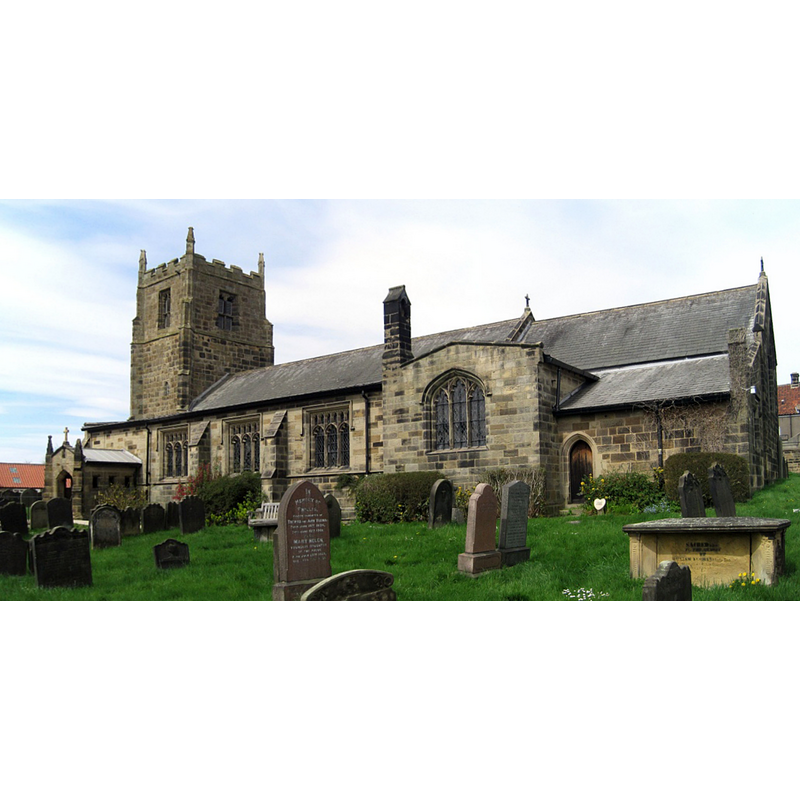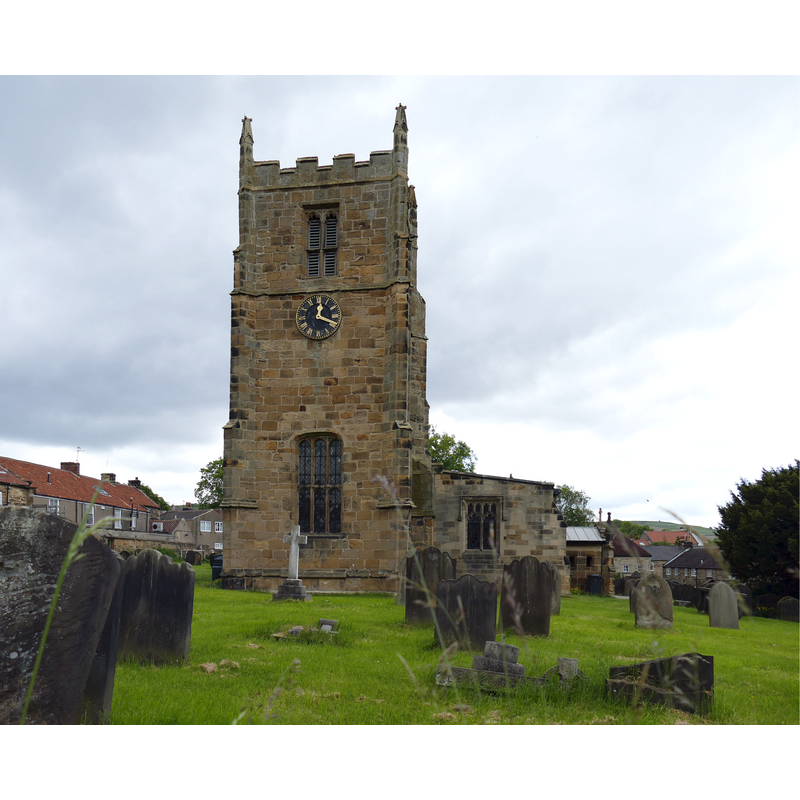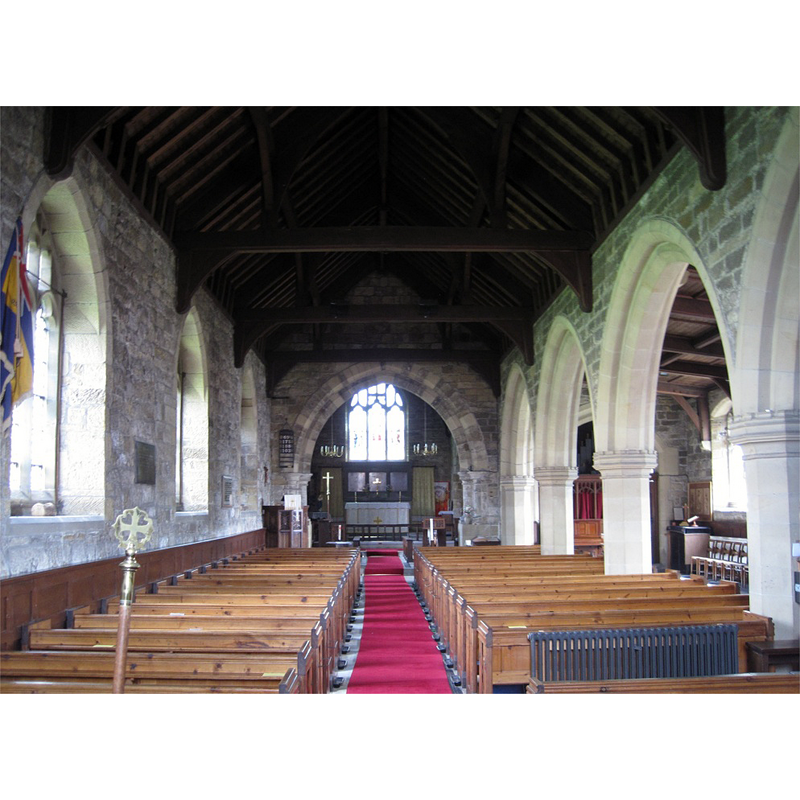Osmotherley / Asmundrelac / Asmundreli / Essemundrelege / Essemuthrelege / Osmunderlay / Osmunderleia

Image copyright © Simon Armstrong, 2013
CC-BY-SA-3.0
Results: 5 records
design element - motifs - rope moulding
view of church exterior - southeast view
view of church exterior - west view
Copyright Statement: Image copyright © Hermann Luyken, 2015
Image Source: digital photograph taken 18 June 2015 by Hermann Luyken [https://commons.wikimedia.org/wiki/File:2015.06.18.111822_Graveyard_tower_St._Peter's_Church_Osmotherley_North_Yorkshire.jpg] [accessed 28 November 2019]
Copyright Instructions: CC-BY-SA-3.0
view of church interior - looking east
view of font and cover
Scene Description: the basin is original
Copyright Statement: Image copyright © Simon Armstrong, 2013
Image Source: digital photograph taken 19 September 2013 by Simon Armstrong [https://commons.wikimedia.org/wiki/File:Osmotherley_Church_of_St_Peter_font.jpg] [accessed 28 November 2019]
Copyright Instructions: CC-BY-SA-3.0
INFORMATION
FontID: 01974OSM
Object Type: Baptismal Font1
Church/Chapel: Parish Church of St. Peter
Church Patron Saints: St. Peter
Church Location: School Ln, Osmotherley DL6 3BW, UK -- Tel.: +44 1845 537277
Country Name: England
Location: North Yorkshire, Yorkshire and the Humber
Directions to Site: Located off (E) the A19, 16 km N of Thirsk
Ecclesiastic Region: Diocese of Leeds
Historical Region: Hundred of Allerton
Font Location in Church: Inside the church
Century and Period: 11th - 12th century, Norman
Font Notes:
Click to view
There is an entry for Osmotherley [variant spelling] in the Domesday survey [https://opendomesday.org/place/SE4597/osmotherley/] [accessed 28 November 2019] but it mentions neither cleric nor church in it. Glynne's 18 August 1868 visit to this church (in Butler, 2007) reports: "The font has [a] circular bowl and is cast into the churchyard." Described in Cox & Harvey (1907) as a baptismal font of the Norman period. [NB: not mentioned in Bulmer's 1890 Directory or in Pevsner (1985)]. An entry in the Yorkshire Notes and Queries (vol. V: 1909) notes a "Norman font with cable moulding" in this church [source: index by Colin Hinson © 2003 [www.genuki.org.uk/big/eng/YKS/CBW/ynq/v5p8.htm]]. The entry for this parish in the Victoria County History (York North Riding, vol. 1, 1914): "The carved fragments and the apse said to have been discovered at the last restoration point to the former existence of a pre-Conquest church here. The earliest part of the present church is the nave, which was built about 1190, to which date the south doorway, now in the aisle wall, belongs. [...] 12th-century font of straight cylindrical form, the only enrichment being a cable mould near the top edge." The entry for this church in Historic England [Listing NGR: SE4556797186] notes: "Church. C12 south door, C14 chancel, C15 south chapel and tower, C16 south porch and south aisle; chancel, south chapel, south aisle and nave virtually rebuilt during restoration in 1892 [...] Remains of an Anglo-Danish cross-shaft with interlace and part of a hogback tombstone. [...] Early C12 font, cylindrical in shape, with rope motif frieze near the top." There is damage to the upper rim likely caused by the old metal staples; the font has been remounted on a modern base. The wooden cover with graded mouldings is modern as well.
COORDINATES
Church Latitude & Longitude Decimal: 54.368158, -1.300164
Church Latitude & Longitude DMS: 54° 22′ 5.37″ N, 1° 18′ 0.59″ W
UTM: 30U 610433 6025816
MEDIUM AND MEASUREMENTS
Material: stone, type unknown
Font Shape: cylindrical (mounted)
Basin Interior Shape: round
Basin Exterior Shape: round
LID INFORMATION
Date: modern
Material: wood
Apparatus: no
Notes: round, with graded mouldings; modern
REFERENCES
Victoria County History [online], University of London, 1993-. Accessed: 2008-11-12 00:00:00. URL: https://www.british-history.ac.uk.
Yorkshire Notes and Queries, [1900?]
Cox, John Charles, English Church Furniture, New York: E.P. Dutton & Co., 1907
Glynne, Stephen Richard, The Yorkshire notes of Sir Stephen Glynne (1825-1874), Woodbridge: The Boydell Press; Yorkshire Archaeological Society, 2007


